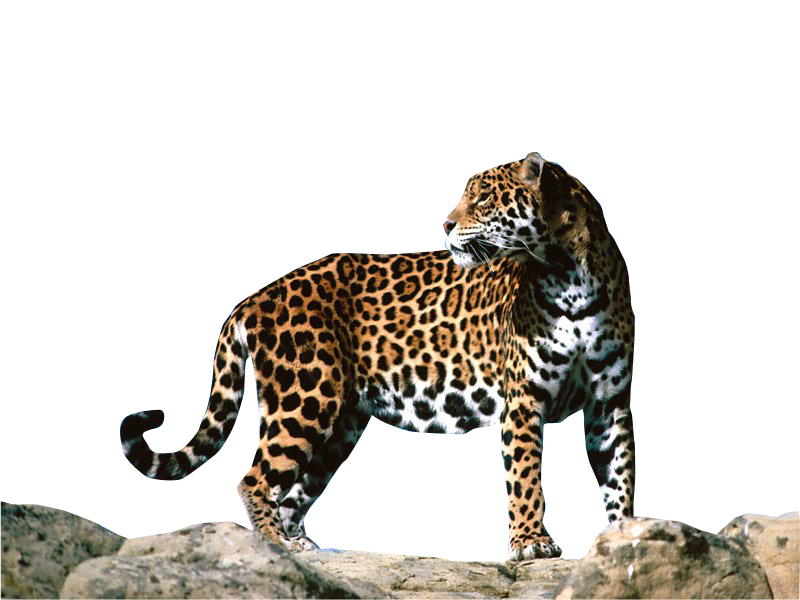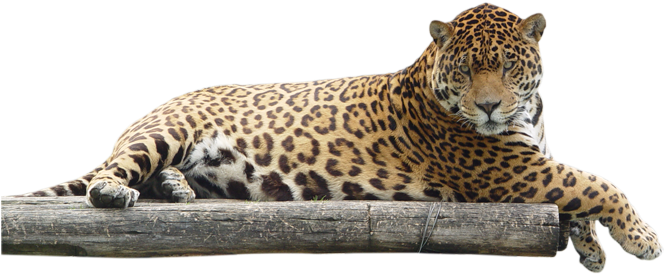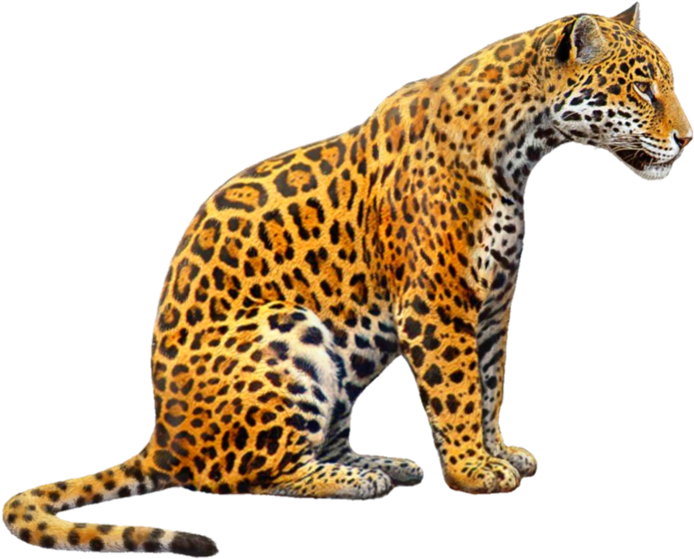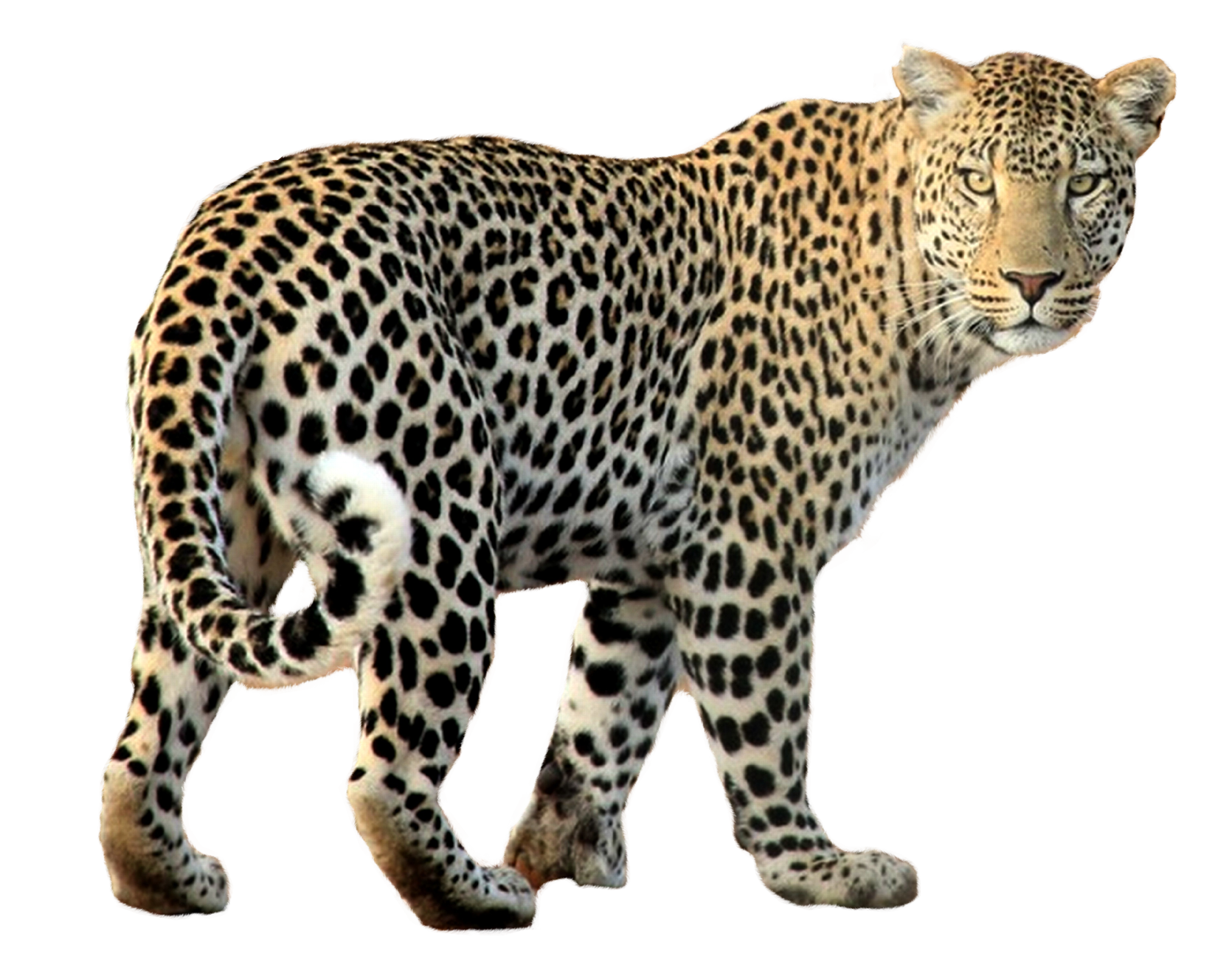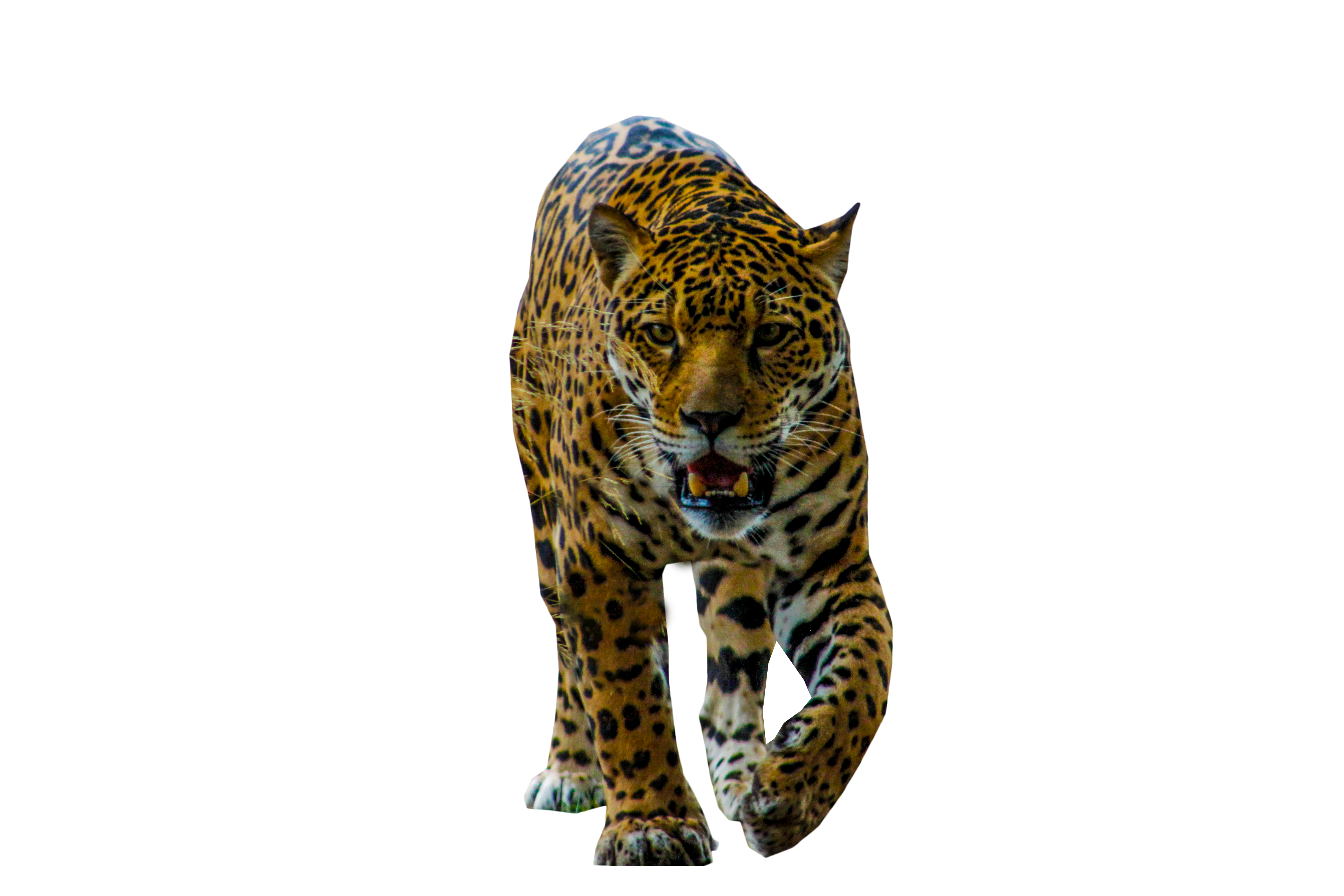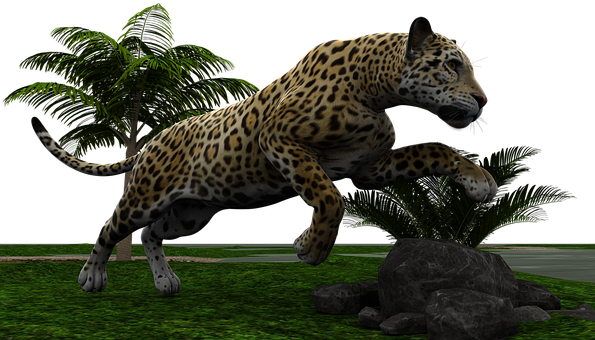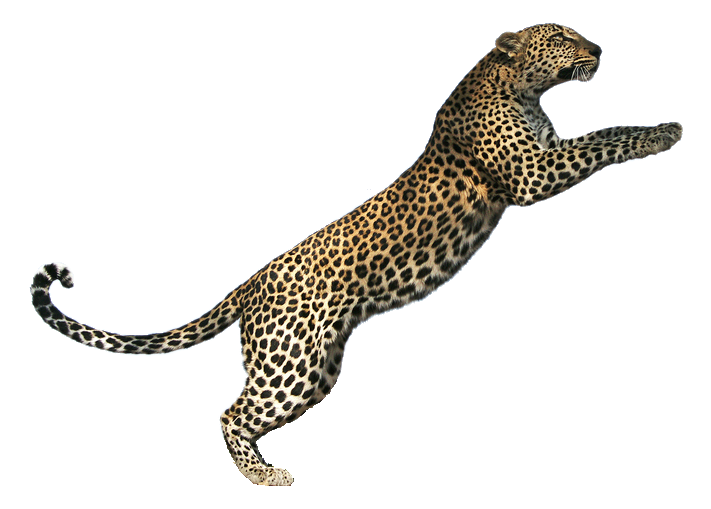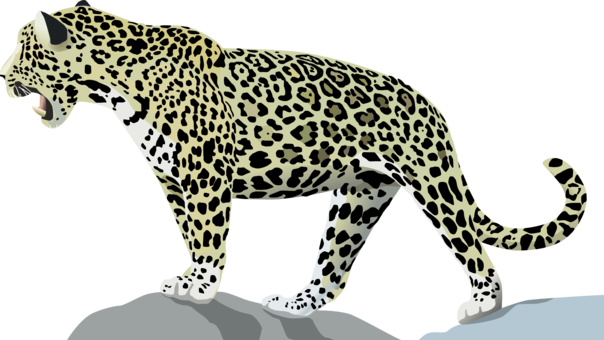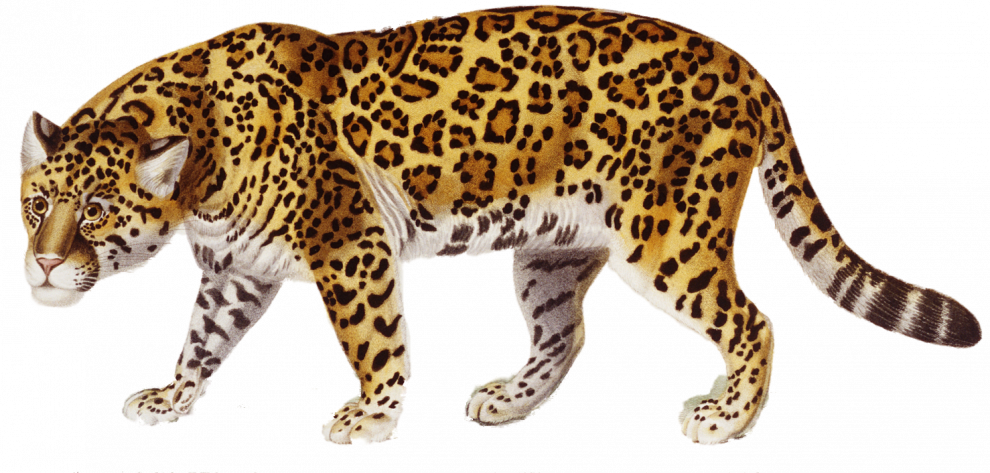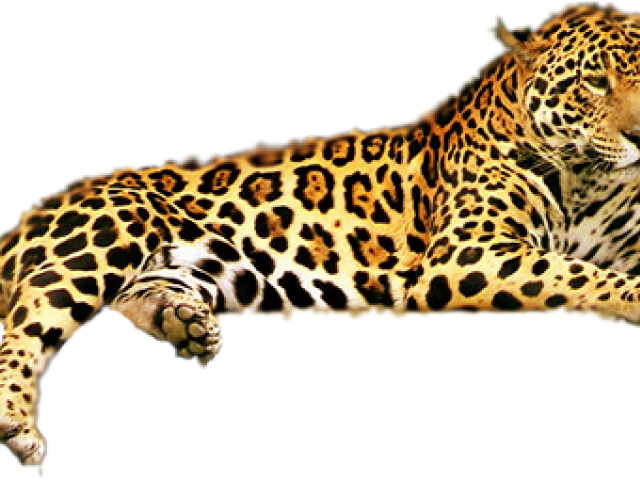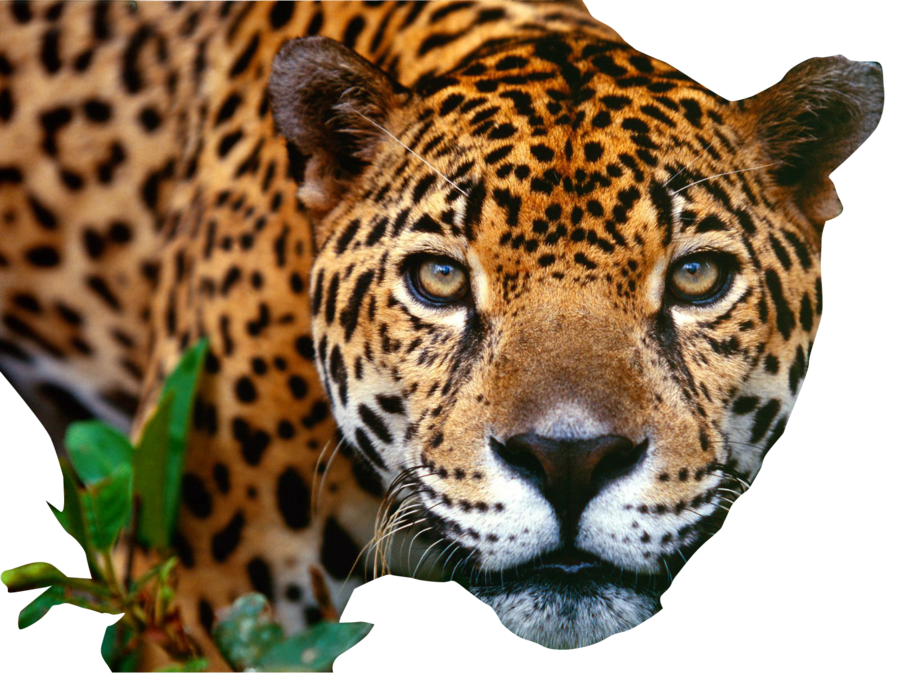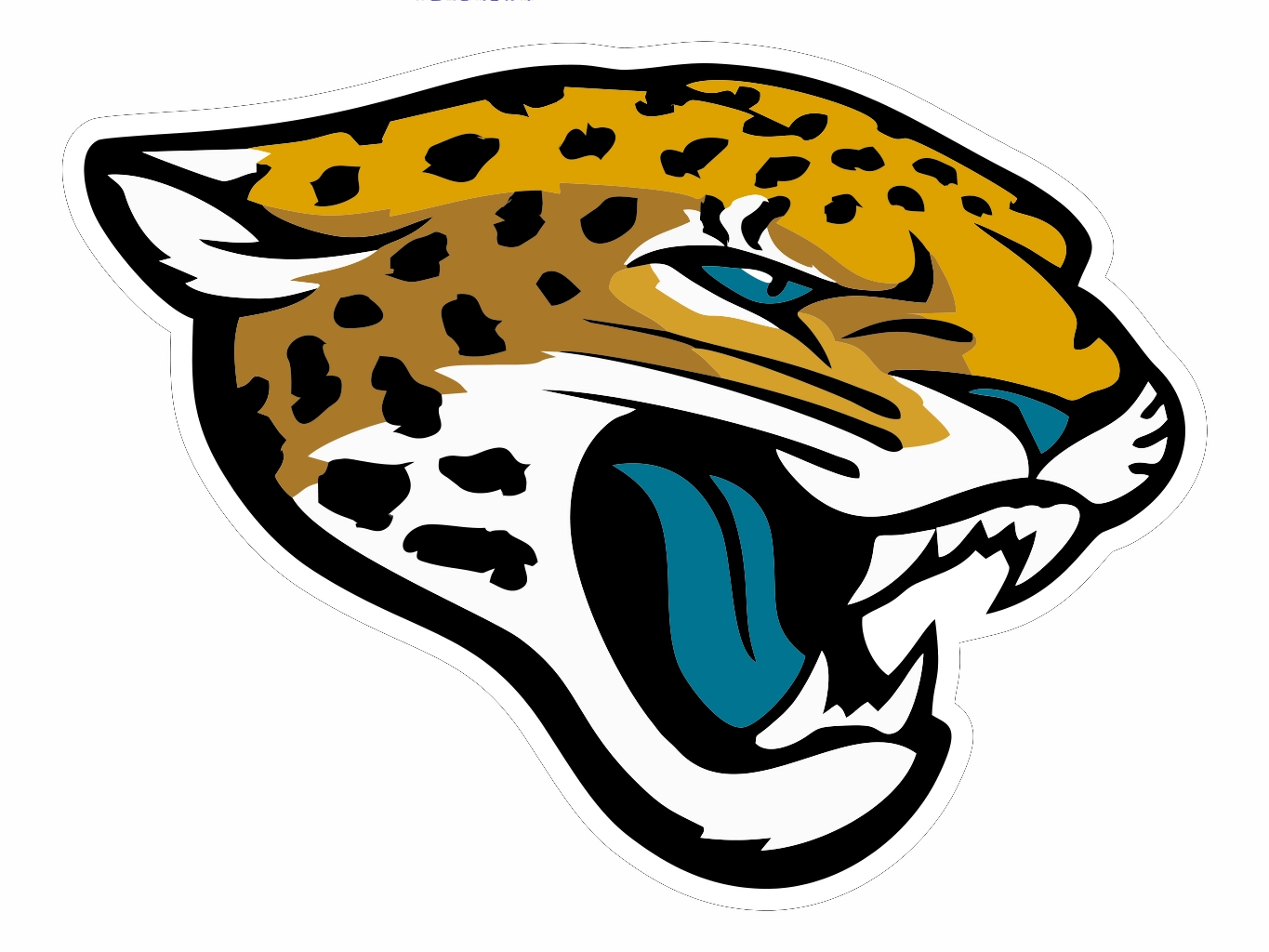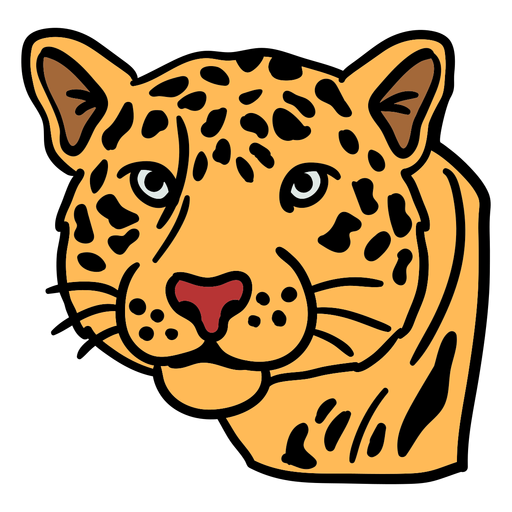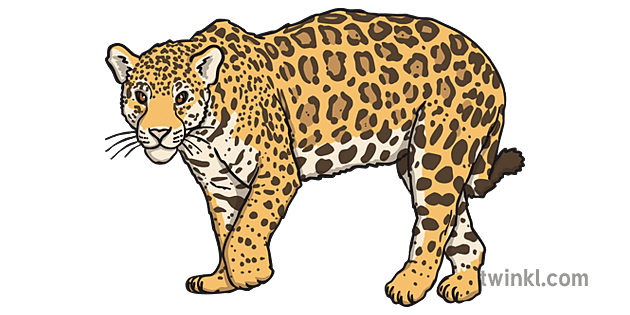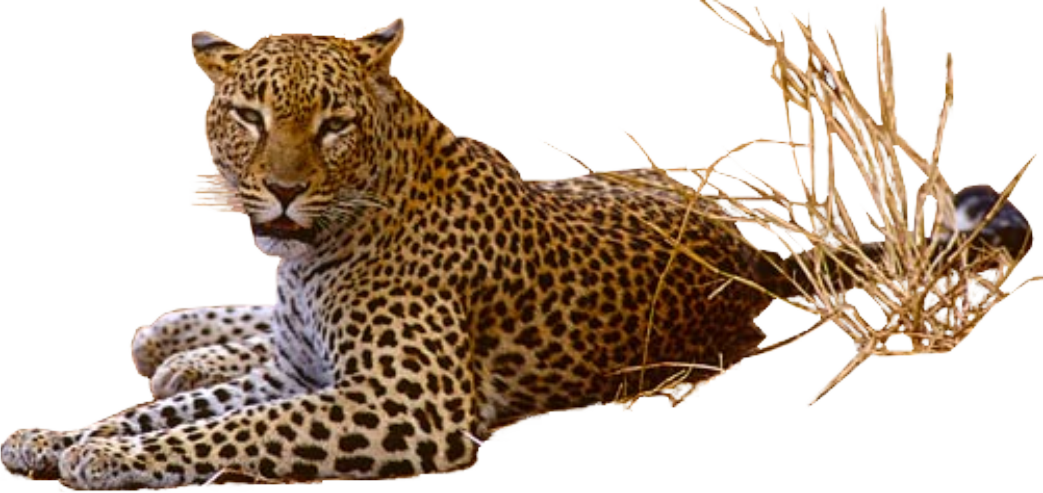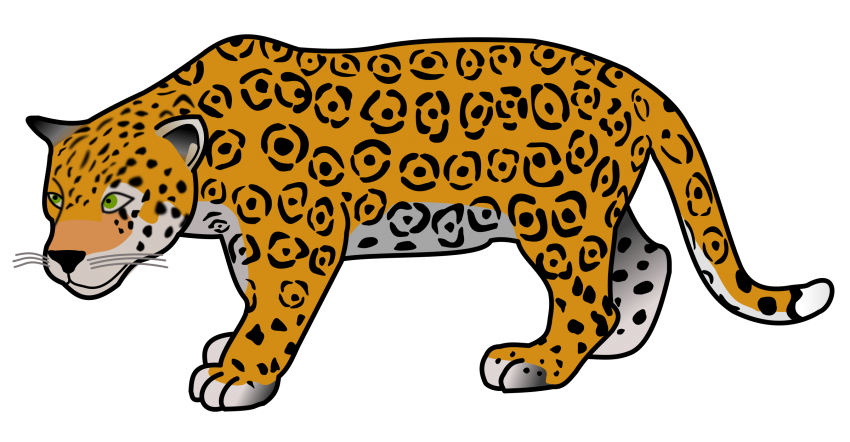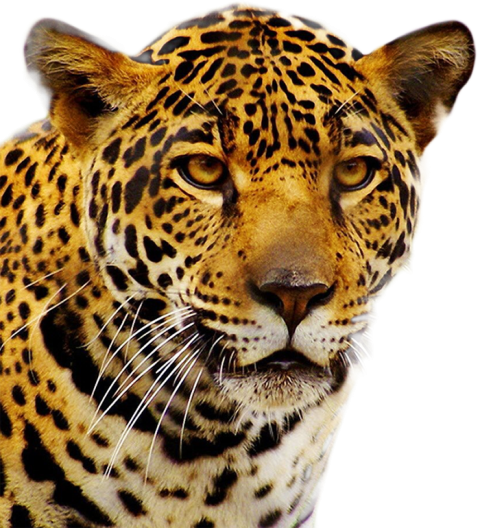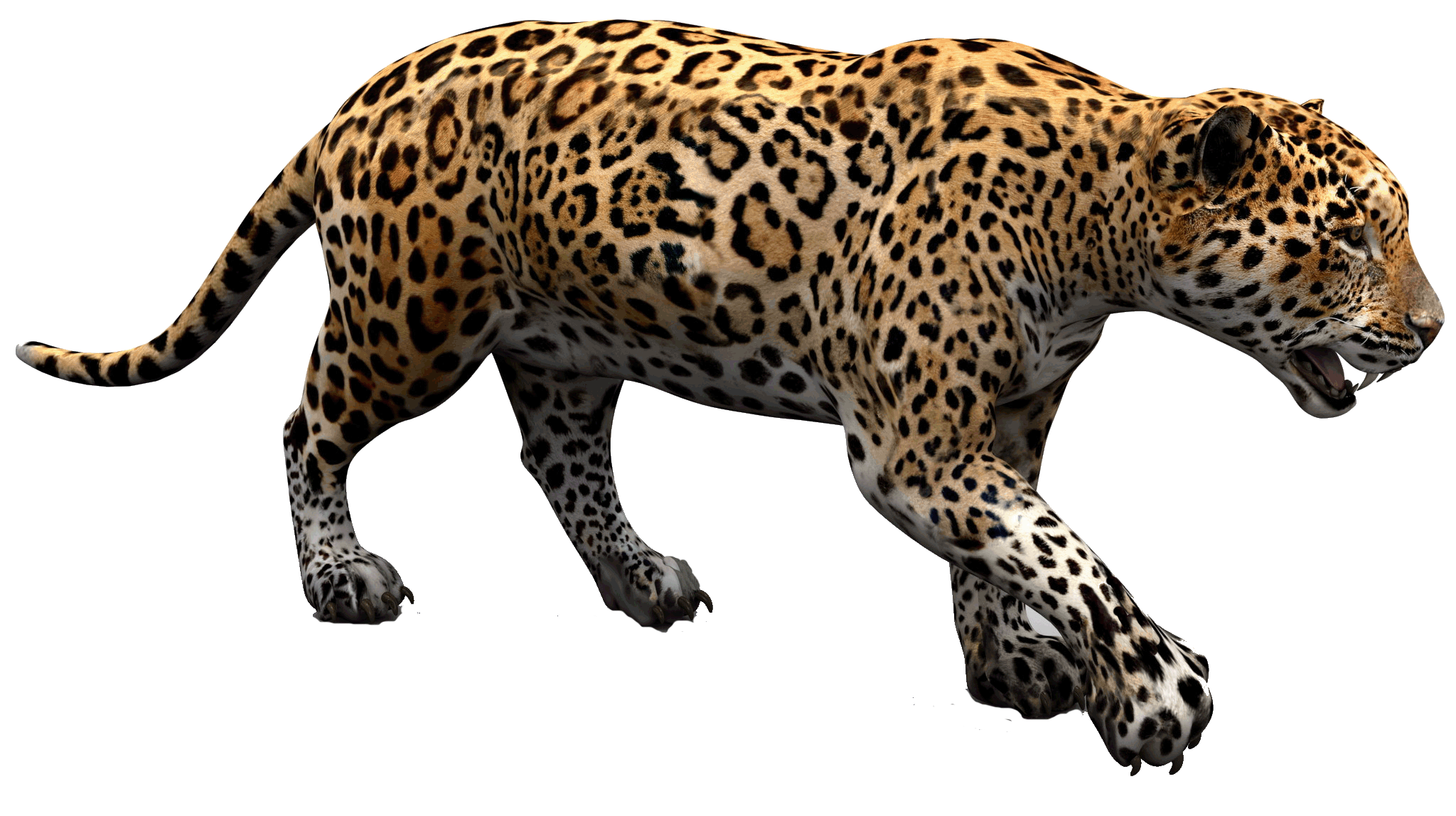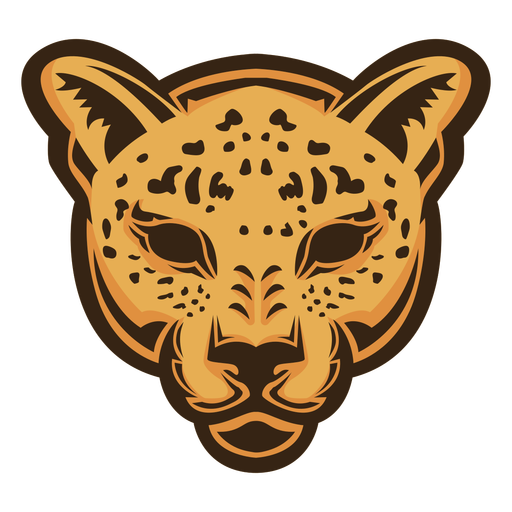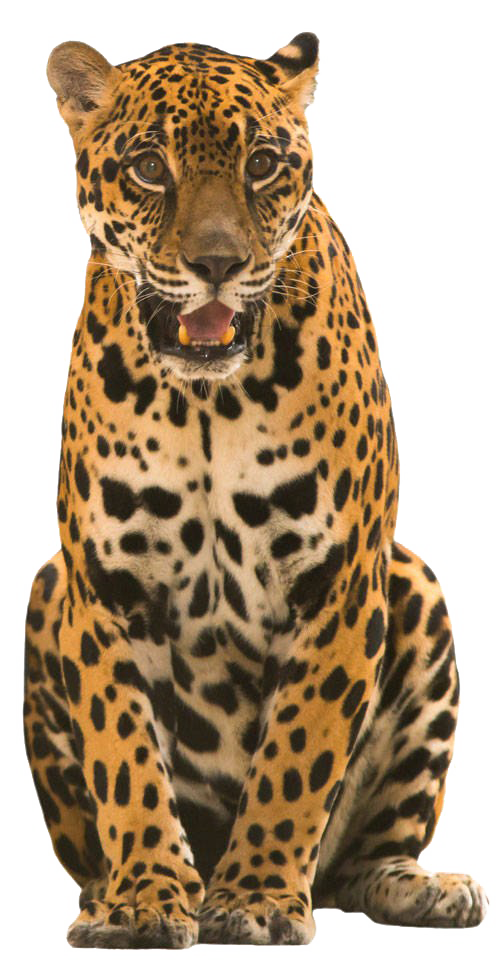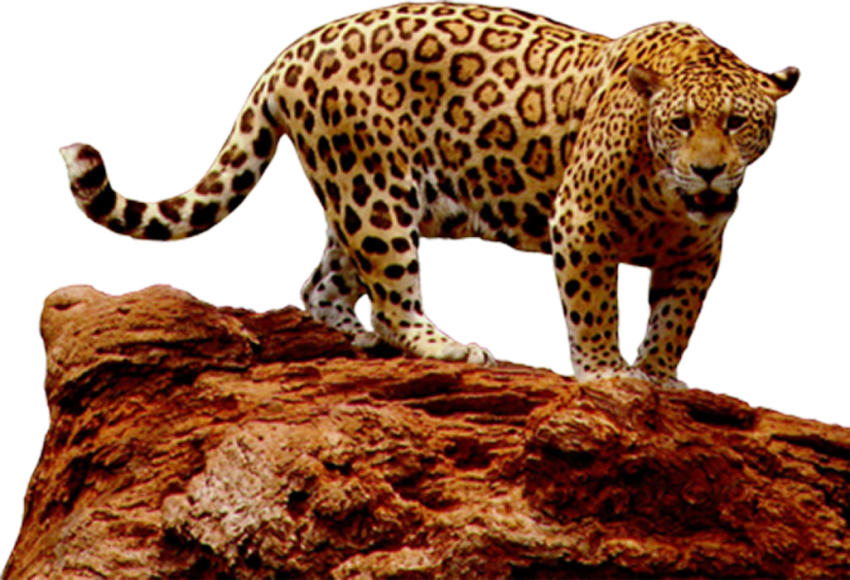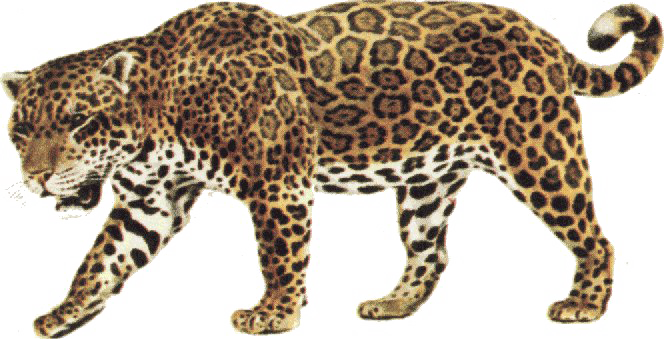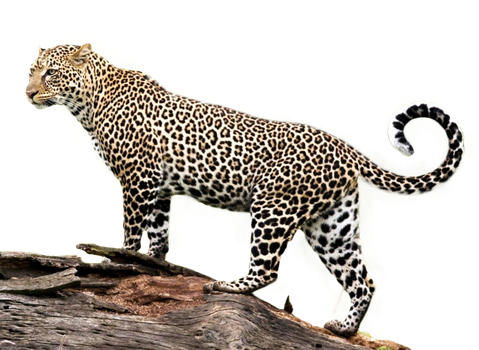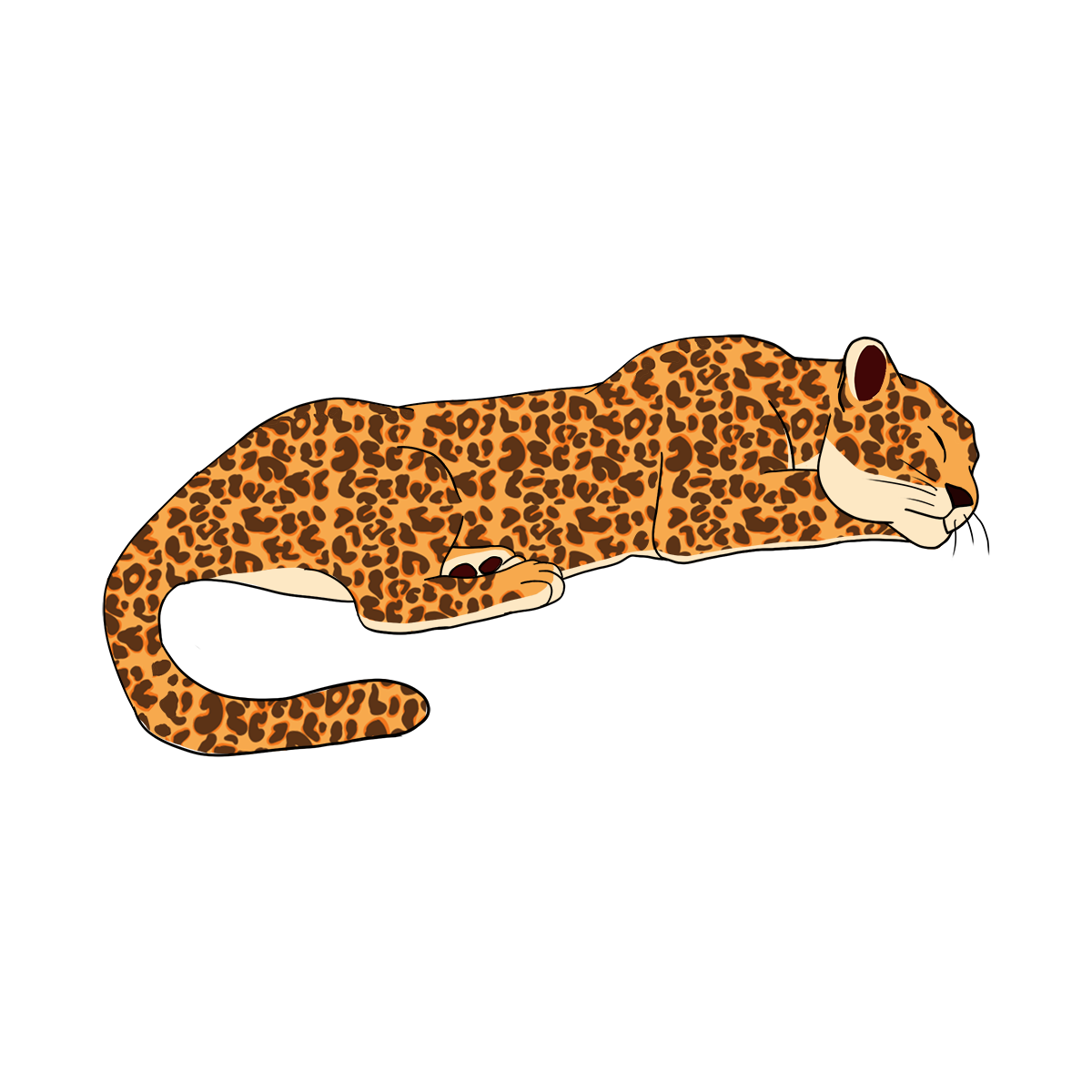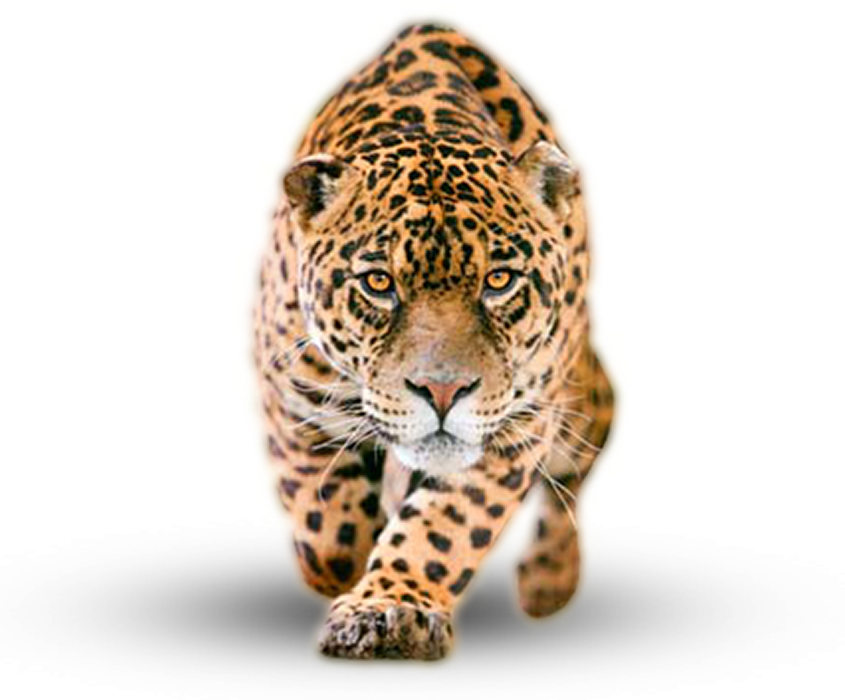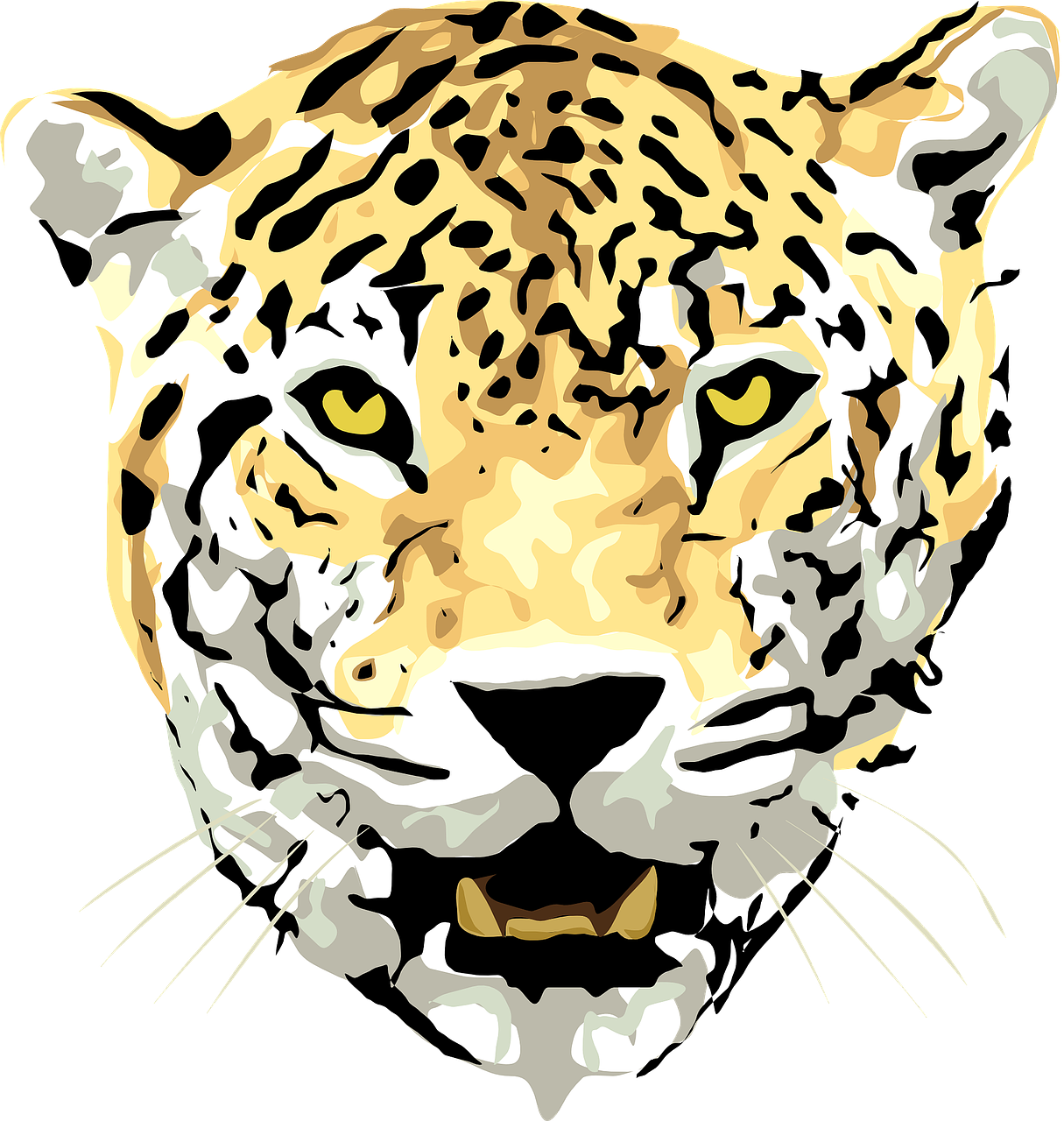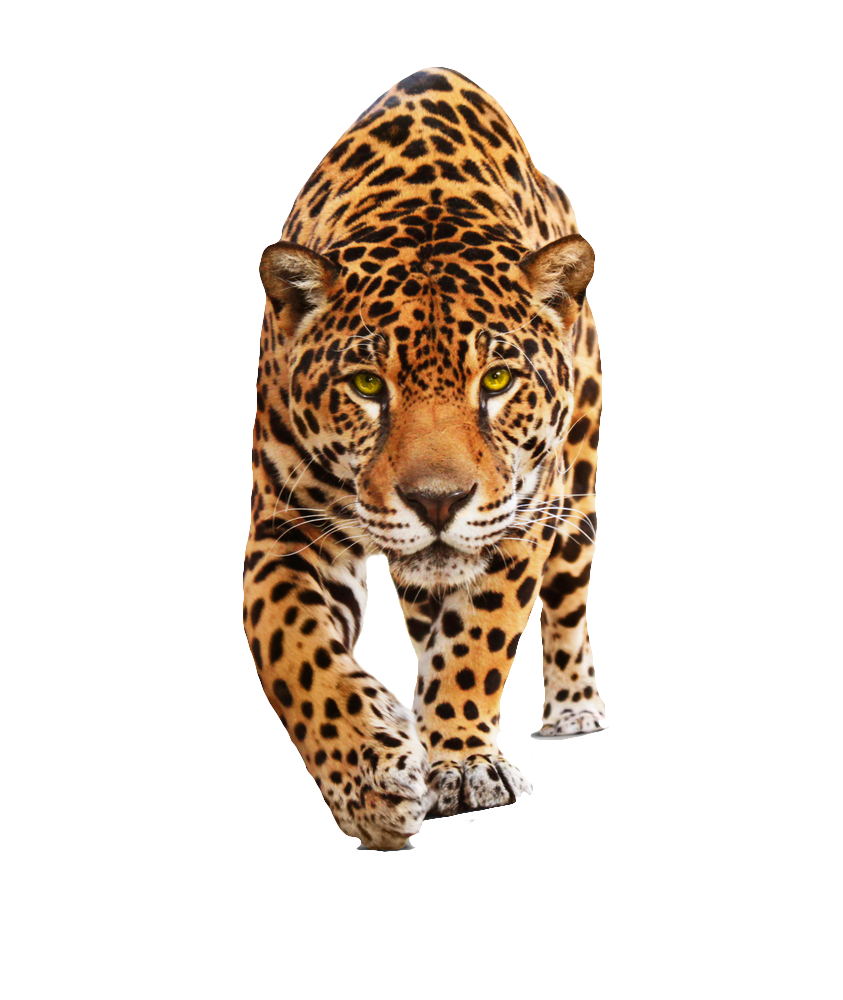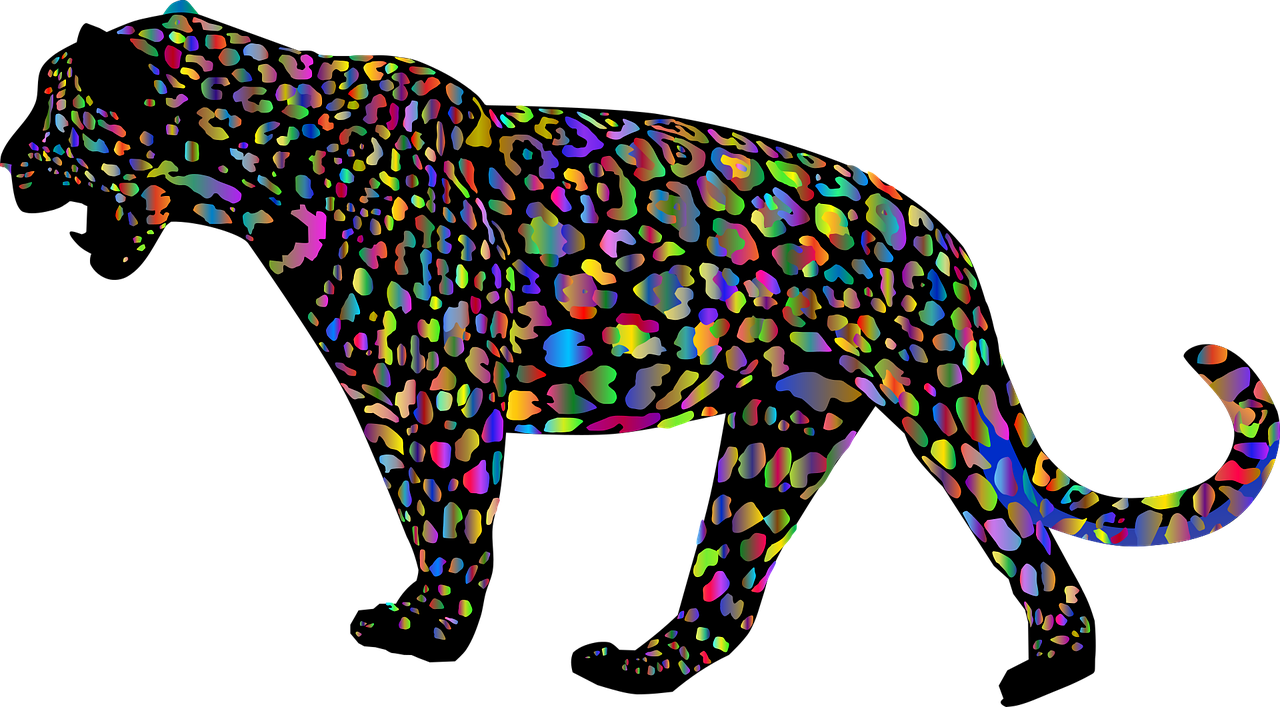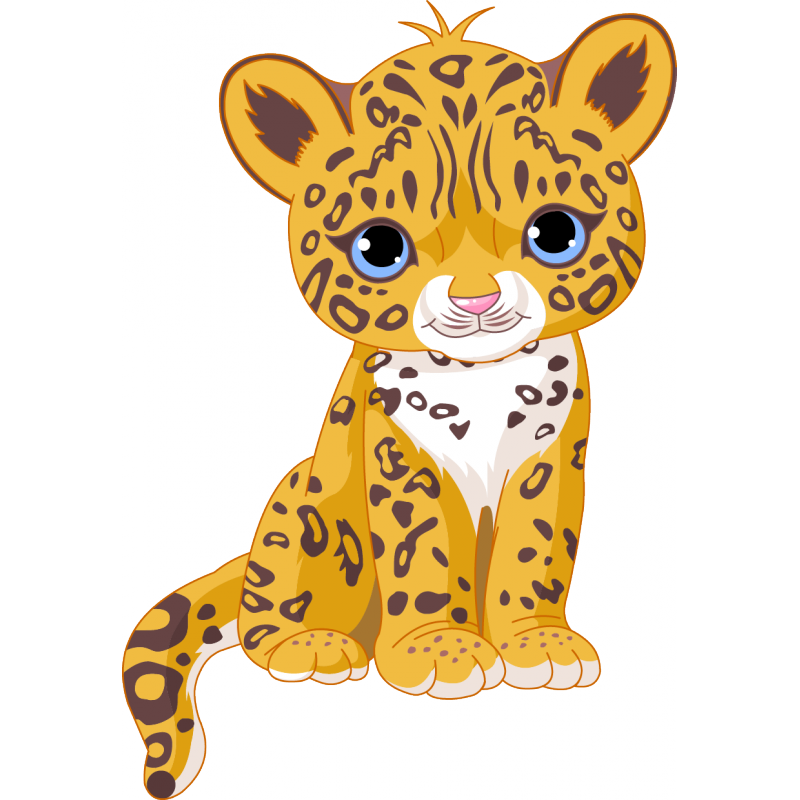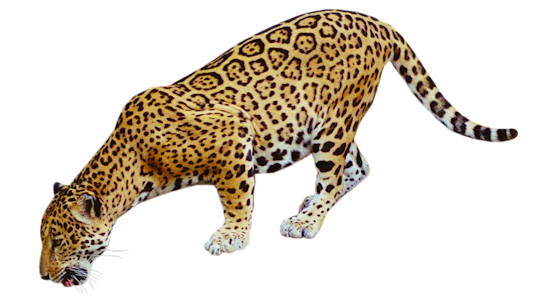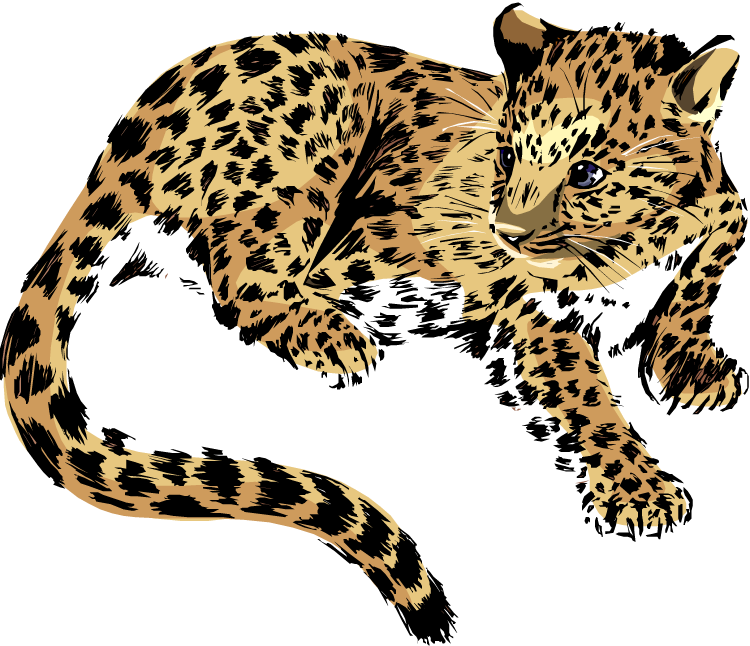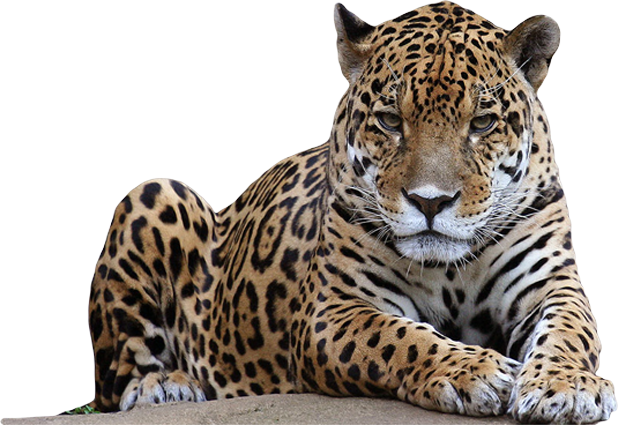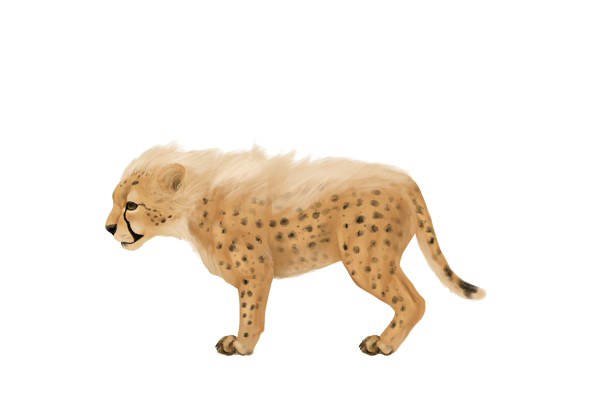Download top and best high-quality free Jaguar Animal PNG Transparent Images backgrounds available in various sizes. To view the full PNG size resolution click on any of the below image thumbnail.
License Info: Creative Commons 4.0 BY-NC
The jaguar is a large felid animal native to the Americas and the sole extant member of the genus Panthera. It has an unique coat with dots that transition to rosettes on the sides and pale yellow to tan colored fur. It is the biggest cat species in the Americas and the third largest in the world, with a body length of up to 1.85 m (6 ft 1 in). Its strong bite allows it to pierce turtle and tortoise carapaces, as well as use an uncommon way of killing: it bites right through the skull of mammalian victims between the ears, delivering a deadly blow to the brain.
During the Early Pleistocene, the jaguar most likely came in the Americas over the land bridge that originally crossed the Bering Strait. Jaguar skeletons discovered in the Americas date from 130,000 years ago. The range of the jaguar now stretches from extreme southern Arizona in the United States, through Mexico and much of Central America, the Amazon rainforest, and south to Paraguay and northern Argentina.
It may be found in both forested and open areas, although its preferred habitat is moist broadleaf forest, wetlands, and forested areas in tropical and subtropical climates. It is a solitary, opportunistic, stalk-and-ambush apex predator that is good at swimming. It serves a vital function in ecological stabilization and prey population regulation as a keystone species.
Habitat degradation, fragmentation, poaching for body parts trade, and killings in human”wildlife conflict scenarios, notably with ranchers in Central and South America, are all threats to the jaguar. Since 2002, the IUCN Red List has classified it as Near Threatened. Since the late 1990s, the wild population is considered to have decreased. Jaguar conservation priority areas include 51 Jaguar Conservation Units (JCUs), which are vast habitats with at least 50 breeding jaguars. The JCUs are spread over 36 different countries, from Mexico to Argentina.
The jaguar has long been a part of the mythology of many indigenous peoples in the Americas, including the Maya and Aztec civilizations.
In his work Systema Naturae, published in 1758, Carl Linnaeus described the jaguar and gave it the scientific name Felis onca. Several jaguar type specimens were used to designate subspecies throughout the 19th and 20th centuries. Based on the geographic origins and skull characteristics of these specimens, Reginald Innes Pocock designated eight subspecies in 1939. Pocock did not have enough zoological specimens to thoroughly analyze their subspecific status, but he expressed concerns about some of them. Based on a comprehensive review of his work, it was determined that just three subspecies should be recognized. The fossil skull was used to describe P. o. palustris.
The jaguar is classified as a member of the Panthera genus, and it shares numerous physical characteristics with the leopard, according to Reginald Innes Pocock (P. pardus). As a result, he came to the conclusion that they are the most closely connected. Morphological and genetic studies show that populations have a clinal north”south variance, but no indication of subspecific differentiation. The gene flow between jaguar populations in Colombia was considerable in the past, according to DNA analysis of 84 jaguar samples from South America. The jaguar has been classified as a monotypic taxon since 2017.
Download Jaguar Animal PNG images transparent gallery.
- Jaguar Animal Predator No Background
Resolution: 800 × 600
Size: 380 KB
Image Format: .png
Download
- Jaguar Animal Predator PNG Clipart
Resolution: 665 × 274
Size: 307 KB
Image Format: .png
Download
- Jaguar Animal Predator PNG Cutout
Resolution: 694 × 559
Size: 536 KB
Image Format: .png
Download
- Jaguar Animal Predator PNG File
Resolution: 1670 × 1319
Size: 3218 KB
Image Format: .png
Download
- Jaguar Animal Predator PNG Free Image
Resolution: 4752 × 3168
Size: 5092 KB
Image Format: .png
Download
- Jaguar Animal Predator PNG HD Image
Resolution: 595 × 340
Size: 331 KB
Image Format: .png
Download
- Jaguar Animal Predator PNG Image HD
Resolution: 600 × 443
Size: 85 KB
Image Format: .png
Download
- Jaguar Animal Predator PNG Image
Resolution: 512 × 512
Size: 27 KB
Image Format: .png
Download
- Jaguar Animal Predator PNG Images HD
Resolution: 711 × 509
Size: 209 KB
Image Format: .png
Download
- Jaguar Animal Predator PNG Images
Resolution: 604 × 340
Size: 186 KB
Image Format: .png
Download
- Jaguar Animal Predator PNG Photo
Resolution: 512 × 512
Size: 29 KB
Image Format: .png
Download
- Jaguar Animal Predator PNG Photos
Resolution: 653 × 430
Size: 125 KB
Image Format: .png
Download
- Jaguar Animal Predator PNG Pic
Resolution: 990 × 473
Size: 683 KB
Image Format: .png
Download
- Jaguar Animal Predator PNG Picture
Resolution: 640 × 480
Size: 330 KB
Image Format: .png
Download
- Jaguar Animal Predator PNG
Resolution: 900 × 675
Size: 993 KB
Image Format: .png
Download
- Jaguar Animal Predator Transparent
Resolution: 1365 × 1024
Size: 348 KB
Image Format: .png
Download
- Jaguar Animal Predator
Resolution: 512 × 512
Size: 113 KB
Image Format: .png
Download
- Jaguar Animal Background PNG
Resolution: 630 × 315
Size: 42 KB
Image Format: .png
Download
- Jaguar Animal No Background
Resolution: 1043 × 493
Size: 753 KB
Image Format: .png
Download
- Jaguar Animal PNG Background
Resolution: 850 × 442
Size: 202 KB
Image Format: .png
Download
- Jaguar Animal PNG Clipart
Resolution: 480 × 528
Size: 495 KB
Image Format: .png
Download
- Jaguar Animal PNG Cutout
Resolution: 2048 × 1148
Size: 1499 KB
Image Format: .png
Download
- Jaguar Animal PNG File
Resolution: 512 × 512
Size: 120 KB
Image Format: .png
Download
- Jaguar Animal PNG Free Image
Resolution: 500 × 968
Size: 625 KB
Image Format: .png
Download
- Jaguar Animal PNG HD Image
Resolution: 850 × 580
Size: 725 KB
Image Format: .png
Download
- Jaguar Animal PNG Image File
Resolution: 664 × 339
Size: 404 KB
Image Format: .png
Download
- Jaguar Animal PNG Image HD
Resolution: 479 × 350
Size: 252 KB
Image Format: .png
Download
- Jaguar Animal PNG Image
Resolution: 1200 × 1200
Size: 368 KB
Image Format: .png
Download
- Jaguar Animal PNG Images HD
Resolution: 845 × 700
Size: 456 KB
Image Format: .png
Download
- Jaguar Animal PNG Images
Resolution: 1215 × 1280
Size: 814 KB
Image Format: .png
Download
- Jaguar Animal PNG Photo
Resolution: 843 × 1000
Size: 607 KB
Image Format: .png
Download
- Jaguar Animal PNG Photos
Resolution: 1280 × 707
Size: 485 KB
Image Format: .png
Download
- Jaguar Animal PNG Pic
Resolution: 800 × 800
Size: 519 KB
Image Format: .png
Download
- Jaguar Animal PNG Picture
Resolution: 540 × 307
Size: 181 KB
Image Format: .png
Download
- Jaguar Animal PNG
Resolution: 750 × 646
Size: 195 KB
Image Format: .png
Download
- Jaguar Animal Transparent
Resolution: 618 × 425
Size: 425 KB
Image Format: .png
Download
- Jaguar Animal
Resolution: 600 × 400
Size: 99 KB
Image Format: .png
Download
